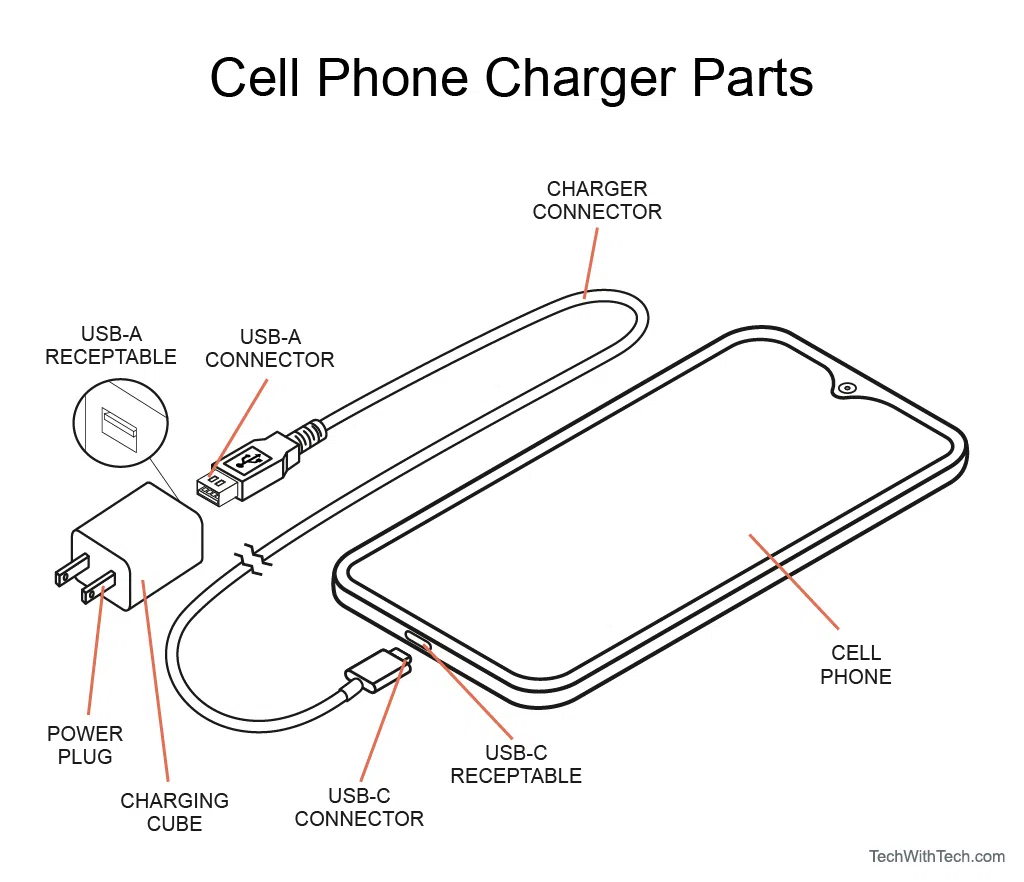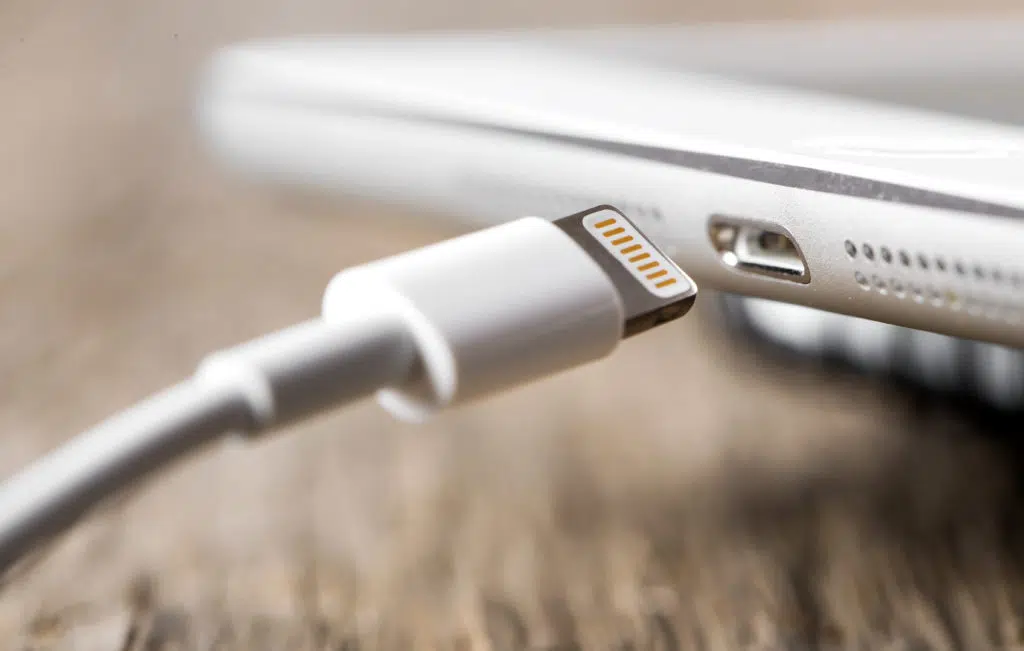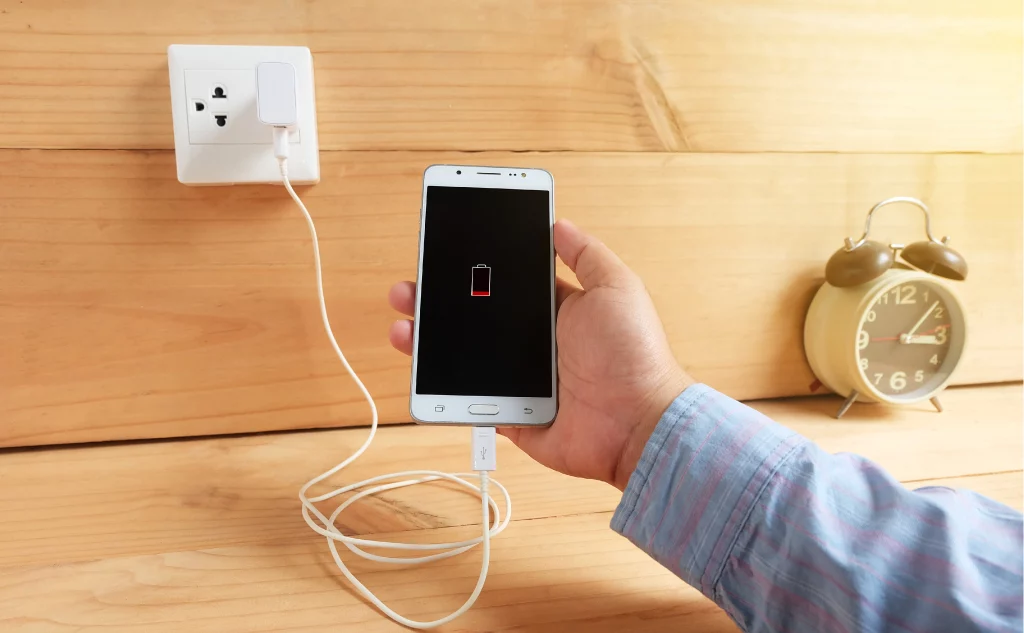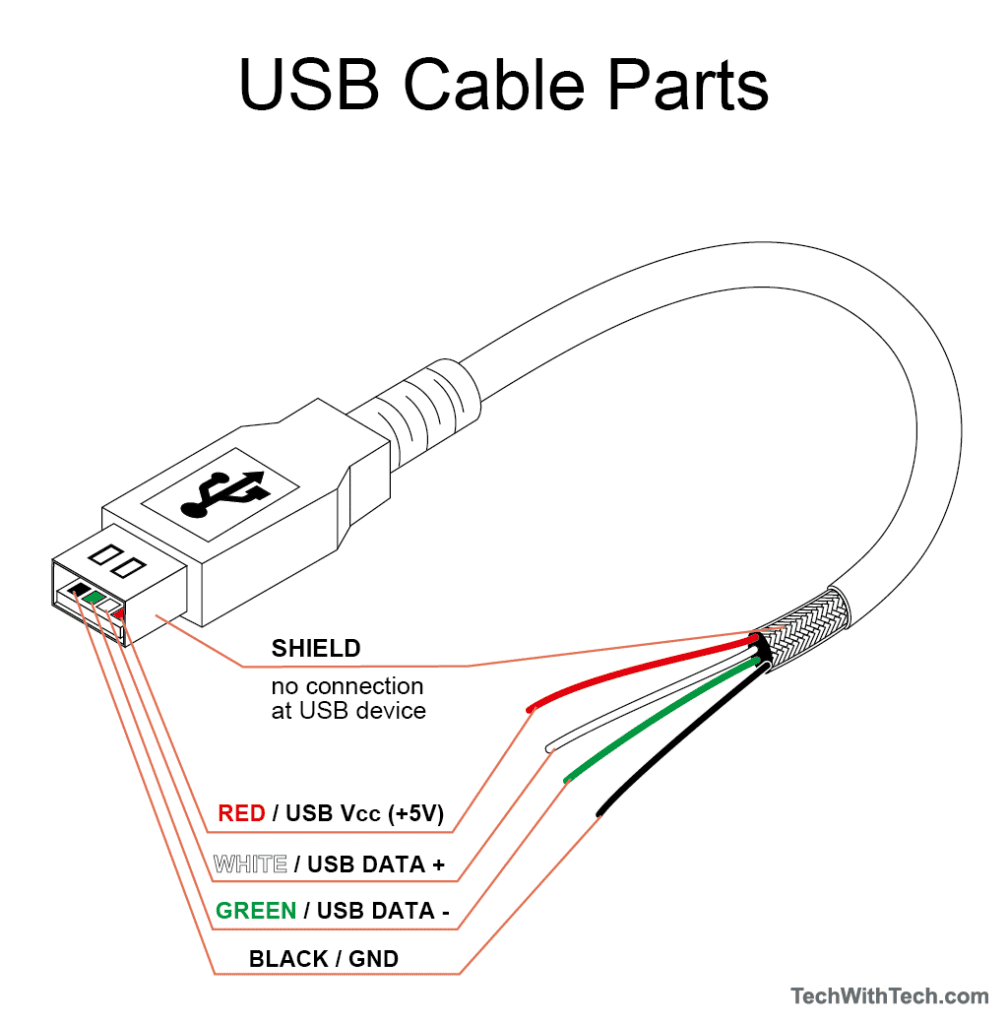Are you curious about the workings of your cell phone charger parts? Despite their varying designs and sizes, all chargers share a common purpose – to recharge your phone’s battery.
Every charger, no matter its make or model, is composed of several key parts. These include the power plug, transformer, rectifier, filters, and voltage regulators, and, of course, the charger connector.
If you’ve ever wanted to understand more about the parts of your charger, their names, and their roles, then you’ve come to the right place.
Plus, we’ll also guide you on where to find high-quality replacement parts if you ever need to fix a component. Let’s dive in!

What Are the Parts of Your Cell Phone Charger? (5 Components)
#1 Power Plug
Think of the Power Plug as the gateway to the energy source for your cell phone charger. This is the part that connects to your wall outlet.
Power Plugs can differ in shape and size, usually conforming to the common outlets in your country. Different Power Plugs are provided based on the geographical market of the mobile device.
#2 Transformer
Transformers are vital electrical circuits that step down the voltage of the electrical current from your wall outlet. This stepping down is necessary because the voltage from most household outlets is too high to charge a mobile directly.
Depending on the charger, the transformer adjusts the voltage to a range that your cell phone can safely handle, typically between 5 to 12 volts.
#3 Rectifier
The role of a rectifier in a cell phone charger is to transform the incoming AC current into DC current, which most appliances and devices operate on.
This conversion is accomplished using diode-based rectifiers, which only allow current to flow in one direction.
#4 Filters and Voltage Regulators
Once the AC current has been converted to DC by the rectifier, it passes through several filters and voltage regulators.
These circuits stabilize the current coming from the rectifier, smoothing out any variations and disturbances in the current flow, which could potentially harm your cell phone battery.
#5 Charger Connector
The last part of any cell phone charger is the connector. This is usually a separate cable that can be detached and replaced.
Today, USB cables are the most commonly used for this purpose, providing a connection between the charger and your device.
By understanding these components, we can appreciate the complexity and importance of the humble cell phone charger.
When is the Right Time to Replace a Phone Charging Port or Cable?
Although low-cost chargers may appear to be a good deal, it’s important to keep in mind the old saying “You get what you pay for.” This is especially applicable to phone chargers.
The potential for a charger meltdown is always there, and this risk is heightened when it comes to inferior products, resulting in situations that can be both dangerous and expensive.
If you encounter a situation where your charging cable has melted inside the port, avoid attempting a repair on your own. Instead, take your phone to a professional repair shop.
If they’re unable to fix the charging port, be ready to consider buying a new phone.
If you see smoke or smell the unmistakable aroma of an electrical fire, the best thing to do is to disconnect everything immediately.
Don’t try to investigate the problem yourself – just replace the malfunctioning charger. It’s not safe to attempt to repair electrical equipment without professional help.
While phone chargers are generally safe to use, it’s not worth risking potential harm over a low-quality charger. Make the wise decision and invest in a trustworthy, high-quality charger for your device.
We have a wealth of useful information and advice for those struggling with phone charging issues, which can be found in our post “iPhone Not Charging: What are Common Causes?“
However, if you’re feeling adventurous or unable to take your phone to a repair shop, there are multiple options for purchasing charging ports and parts.
If you’re partial to Amazon, we recommend parts from iFixit. The owner of iFixit, a trusted voice in the industry who testified at the FTC with Tech With Tech’s Theresa McDonough, provides not only quality parts but also tutorials on how-to’s for cell phone charging port repair.
The coverings of USB cables can differ, but what is inside a standard cord typically doesn’t change. We are going to run through the colors of the wires inside.
You should NOT cut into USB cables unless you know what you are handling.
- Red Wire: It is the wire that passes on the positively charged electric power. The red wires in a USB cable have five volts of direct current electricity.
- Black Wire: Everything needs a grounding wire. Cell phone chargers are no different.
- White Wire: A white wire is typically the positive wire but for data.
- Green Wire: It is the negative wire and also for data.
Usually, USB Type-A is on one side to connect to the charging brick and a Micro USB connector on the other end to connect to the cell phone.
But just like with laptop chargers, USB Type-C is becoming more and more common these days. A lot of cell phone chargers come with connectors for USB Type-C on both ends.
The standardization of the power connectors also helps cell phone chargers to have the ability to cross-charge other brands.
The only cell phone brand that has a history of doing its own thing is Apple. They use their own proprietary lightning connector to connect to the phone.
You will see Micro USB B and USB Type C as the standard connectors for most other cell phones.
One of the main reasons USB Type C has become so popular with cell phone manufacturers, and consumers is that USB Type C is reversible.
This means that you can plug the connector in any direction in the cell phone port. It will work, unlike the Micro USB connector where you need to plug in the correct orientation.

Apple’s lightning connector, on the other hand, Is already reversible.
But still, there is pressure from different governments and consumers for Apple to switch to USB Type C.
This is because a lot of other devices such as laptops, cameras, and smartwatches use USB Type C to charge anyway.
It would be easier for the end-user to carry one charger instead of 3. But so far, Apple hasn’t announced any plan to switch to USB Type C.



